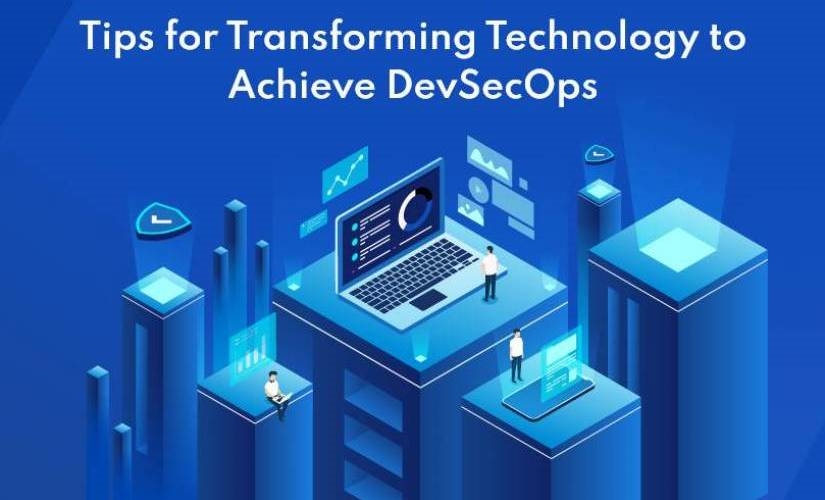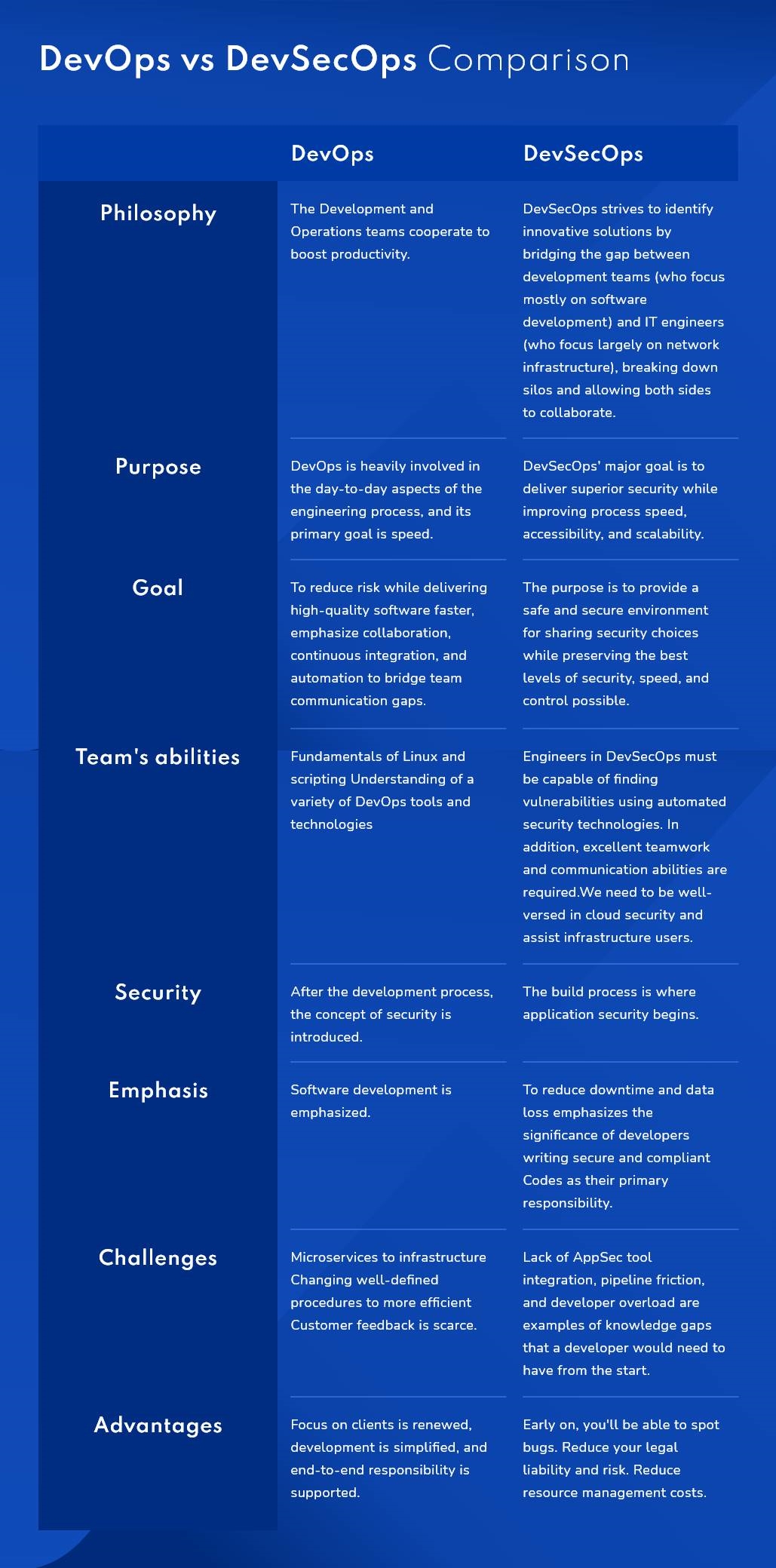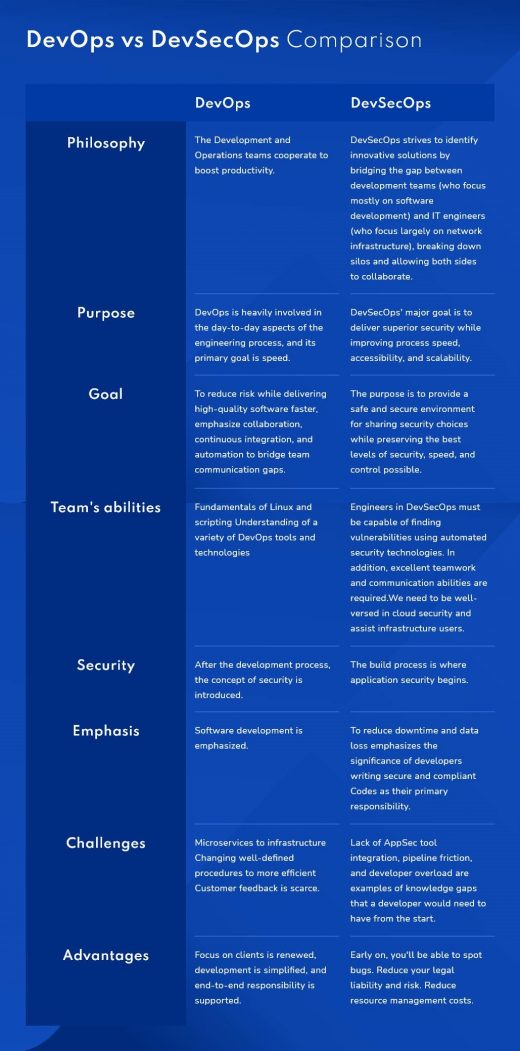How to Transform DevOps Technology to Achieve DevSecOps
How to Transform DevOps Technology to Achieve DevSecOps

Organizations wanting to prosper and grow through innovative apps and services have reaped significant benefits from the change to flexible cloud computing platforms, shared storage and data, and dynamic applications.
Nowadays, hackers search for new ways to spread malware and other flaws. The impact on both the customer system and the company’s reputation would be enormous, especially in today’s world, where bad news spreads in seconds.
Putting security on the same level as development and operations is essential for any application development and delivery company. Therefore, security is at the forefront of every developer’s and network administrator’s attention while creating and delivering apps in playstore or apple store.
What is DevSecOps?
DevSecOps (development, security, and operations) is a set of concepts and practices for securing an enterprise’s software, infrastructure, applications, and data. It’s a step forward from the conventional security approach, primarily concerned with securing the perimeter.
DevSecOps encourages security to have a more active role in the software development life cycle (SDLC).
Benefits of DevSecOps
- Reduce app vulnerabilities.
- From the start, it helps in implementing compliance into the delivery pipeline.
- Ensure and maintain compliance.
- It gives you the ability to take quick actions for changes.
- It should identify vulnerabilities early in the custom software lifecycle.
- Allows teams to operate with great speed and agility.
- It aids in the development of a trusting connection with organizations.
- It should improve observability
- Increase the traceability of your products.
Difference Between: DevOps vs. DevSecOps

Organizations increasingly use the following tools to integrate security into their development, testing, and deployment processes.
(SAST)
Developers can use static application security testing (SAST) to examine their source code for unsafe or poor coding, identifying potential security concerns that should address. Each found issue has a severity level, which developers can prioritize treatment.
(DAST)
Without having access to source code, dynamic application security testing (DAST) solutions can automatically perform security testing on running applications, testing for several real threats. For example, these tools are used to test a web application’s HTTP and HTML interfaces.
Scanning of Images
One of the main problems in a DevSecOps environment is finding vulnerabilities in container images, frequently downloaded from public repositories or other untrusted sources. In addition, contain deployments can increase quickly, possibly increasing the attack surface.
Tools for Infrastructure Automation
DevSecOps tools automatically detect and fixes numerous security vulnerabilities and configuration issues in cloud systems.
Tools for Threat Modelling
Threat modeling technologies assist the DevSecOps team in predicting, detecting, and assessing threats across the attack surface. The goal is for teams to rapidly make data-driven and proactive decisions to reduce their security risk exposure.
Tools for Notification
DevSecOps teams can use alerting tools to respond fast to security occurrences. However, in theory, an alerting tool should only notify the team when the aberrant occurrence has been examined, prioritized, and considered worthy of the team’s attention.
DevSecOps Best Practices
Must integrate Security into DevOps pipelines for organizations that seek to bring IT operations, security personnel, and application developers together. Rather than retrofitting security later in the cycle, the goal is to make it an essential component of the software development workflow.
The first three come from Tokenex dot com — Thank you.
-
Automation is beneficial – DevOps is all about the speed, which doesn’t have to be compromised because security is thrown into the mix. You can ensure that your apps are delivered quickly by incorporating automated security controls and tests early in the development cycle.
-
DevSecOps can help save time and money by integrating security into your workflows. For example, you can detect security concerns early by employing tools that scan Code as you develop it.
-
Perform threat modeling: Threat modeling exercises can assist you in identifying your assets’ vulnerabilities and identifying any gaps in security measures. Dynamic Data Safeguards from Forcepoint can assist you in identifying the riskiest events occurring throughout your infrastructure and incorporating the necessary protection into your DevSecOps workflows.
- Ongoing monitoring – This method entails continuous monitoring of the running code and the infrastructure that supports it—a feedback loop in which bugs or issues are reported and subsequently reported back to development.
- Whether your company has an on-premise data center or is entirely cloud-based, the ability to deploy, configure, and manage infrastructure rapidly and consistently is critical to DevOps success. Infrastructure as Code goes beyond scripting infrastructure settings to treating infrastructure definitions as Code, with source control, code reviews, and tests, among other things.
Tips to Transform DevOps Technology to Achieve DevSecOps
1. Make more Automation’s Security
The ability to automate security checking through scripting, static and dynamic analysis, composition analysis, and integration of testing inside existing tools and procedures goes a long way toward discovering problems early in the development lifecycle and accelerating secure code delivery.
2. Early detection of security issues
DevSecOps implies that failing on the developer’s desktop is preferable to failing on the customer’s laptop or smartphone. Early detection of code vulnerabilities necessitates the use of IDE plugins that provide immediate insights and remedial advice as problems arise.
3. Destroy the structure
Add secure gateways to DevOps to create a user interface that allows you to prevent delays. As a result, it must be organized. You also need to document and create the application process because you have two choices: go back and resolve an issue that may have caused the delay in submission, or take a risk with media coverage. Don’t wait to use the removal process first.
4. Don’t accept a high rate of false positives
To implement a successful “break the build” strategy, you’ll need technology to give accurate results via reports and dashboards while also providing operational visibility. Keeping false positives low allows development teams to trust that security tools will not add to their workload; otherwise, they will begin to dislike security solutions.
5. Analyze the composition
The component scanner can scan the complete application as well as open-source software to ensure that there is no known weak code applied to the unknown.
In addition, component analysis allows you to create a set of tools that you use, making it easier to identify and update when weaknesses are identified.
6. Put a strong emphasis on orchestration
Orchestration may speed up software development using cloud computing, grabbing Code from internet libraries, and using automated techniques. Finding and eliminating vulnerabilities has become mission crucial as practically everything, including infrastructure, has become Code. Recognize that all systems are susceptible to faults and defects. During quick spin-ups and shut-downs, you must “orchestrate” Code and systems.
Conclusion
There’s no denying that DevSecOps is making changes in the way businesses approach security. However, many mid-and low-level businesses are still apprehensive of moving to DevSecOps for several reasons; It includes a lack of knowledge of what DevSecOps is, an unwelcome culture shift for people working there, funding constraints, and sometimes just the ambiguity of the phrase.
The technical and financial advantages that organizations can gain from using DevSecOps are quite promising. In addition, DevSecOps can be extremely beneficial to your firm in the long term if you hire a software development company that provides better solutions.
Image Credit: Provided by the Author; Thank you!
The post How to Transform DevOps Technology to Achieve DevSecOps appeared first on ReadWrite.
(44)


